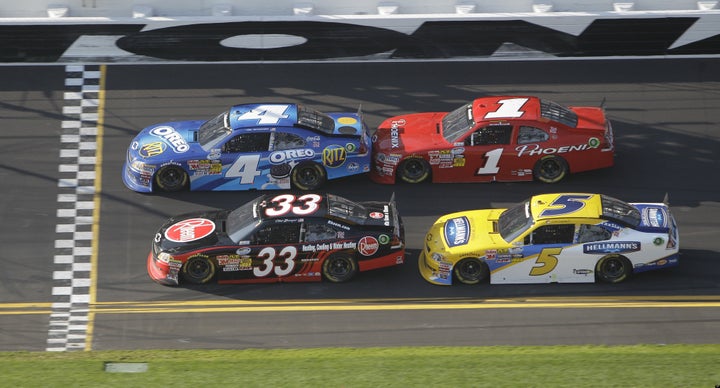
Next time you turn on a NASCAR event and watch the "stock" cars rip by the high-def cameras, remind yourself that this sport is over 60 years old. And boy, have things changed since the old days. The television coverage rarely acknowledges the real roots of the sport, so here are a few things you might not know about the early days of NASCAR.
A race held in Charlotte on June 19, 1949 is often cited as the first NASCAR race. Jim Roper was crowned the winner of the race -- after the first man across the finish line was disqualified for cheating -- and Roper drove himself home in the winning car. He had driven the car to the race, from his home in Kansas. He took home $2,500 for the victory.
While modern races may start 43 cars, NASCAR didn't always have such uniform starting grids. The 1951 Southern 500 started 82 cars.
In 1951, a NASCAR race was held at the State Fairgrounds in Detroit. It was not uncommon in those days to run races at state and county fairs, and many of the races were held on dirt tracks, laid out not long before the race. More than half of the 54 cars to start the race dropped out -- many with clogged air filters -- but the 25,000 or so spectators who watched were impressed. Some were even execs from the local car companies who saw the effect the race had on spectators.
Many of racing's earliest heroes started out on small dirt tracks in the 1950s, where winners might take home only $100. Ned Jarrett, Bobby Isaac and Ralph Earnhardt all started out racing on dirt tracks and it wasn't until 1970 that NASCAR finally left the dirt behind, to race entirely on paved tracks.
It only took until 1955 for the killjoys in Washington to try and shut the sport down. That year, an Oregon senator asked Eisenhower to back a ban on auto racing. Ike refused, but the pressure helped push AAA out of auto race sanctioning. Of course, this just helped NASCAR by removing a competitor.
The Big Three automakers were involved in NASCAR racing at different times and by 1969, some companies were investing huge sums in developing racing technology. In 1969, Dodge began wind tunnel testing of a nose cone and huge spoiler for the car they would eventually race in NASCAR called the Charger Daytona. The car was purpose-built to race in NASCAR, but Dodge would sell a few more than 500 to the public so they could call it a "stock" car.
Bobby Isaac would qualify at Talladega in 1969 at 199 mph in a Charger Daytona. A similar car owned by Chrysler ran the first official 200 mph lap on a NASCAR track with Buddy Baker at the wheel. Not to be outdone, Bobby would take his Daytona up to a NASCAR certified 201.104.
NASCAR introduced rules to hobble the stock cars which had been developed for the sole purpose of racing. At Talladega in August 1970, NASCAR introduced the restrictor plate. The device slowed cars down and many grown men cried.
In 1971, K&K Insurance -- owners of Bobby Isaac's car -- sponsored a trip with the car to the Bonneville Salt Flats. There, Isaac set more than two dozen land speed records including a flying mile at over 216 miles per hour. The records were classified as "stock" because the body of the car was similar to the body on the car anyone could have purchased at a Dodge dealer just a couple years earlier. This time, the record was sanctioned by USAC. The car did not run a restrictor plate on the salt.
Steve Lehto is the author of Bobby Isaac: NASCAR's First Modern Champion and Chrysler's Turbine Car: The Rise and Fall of Detroit's Coolest Creation.